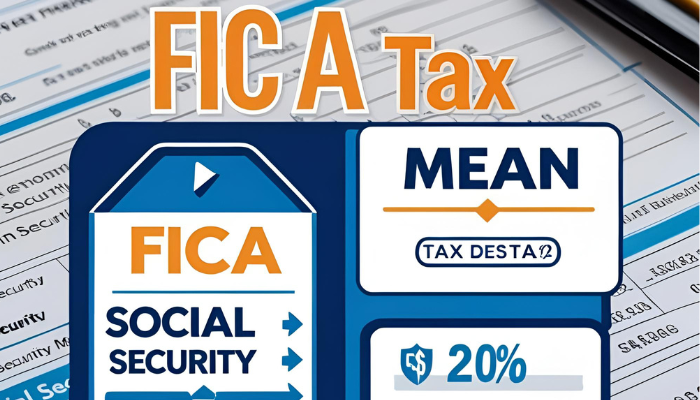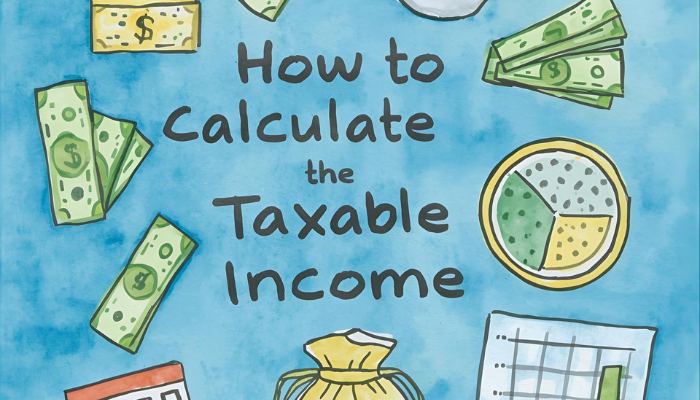
What is FICA Tax?
Studying about what is FICA tax is equally important for individuals and businesses. It is one of the most-neglected terminologies in your taxation documents.
The Federal Insurance Contributions Act (FICA) tax is a mandatory payroll tax. In the US, FICA supports the core two federal programs: Social Security and Medicare.
FICA was first enacted in 1935. It certifies that US employees will use a dedicated portion of their income as a contribution during their years of employment. Doing so will support the monetary and healthcare advantages that you will need in your old age.
It is the legal responsibility of both employees and job-doers to make this financial contribution.
Understanding the History of FICA
Investigating the historical origins will help you comprehend what is FICA tax.
Launch of Social Security Program
Congress introduced the FICA tax in 1935. It was the same year when President Franklin D. Roosevelt launched the Social Security program.
The goal of his administration was to recognize these contributions as earned benefits – resources that employees could rely on in the case of their death, incapacity, or retirement.
Roosevelt was determined that these benefits were not to be reliant on the overall government budget or be susceptible to political manipulation.
Launch of Medicare
Afterwards, in 1965, President Lyndon B. Johnson approved Medicare into law, expanding the program. To pay for medical services for Americans 65 and older, a new payroll tax was introduced under the FICA domain at that time.
With relatively minor modifications to rates and income limits in response to shifts in the National Average Wage Index, FICA contributions have been required ever since.
What is SECA in the US?
If you are running a business or self-employed, the US imposes the Self-Employment Contributions Act (SECA) on them.
Read: What is a VAT number in the US?
How to Calculate FICA?
To calculate FICA tax, consider both Social Security and Medicare components. The formula of 2024 works like this:
Example:
If the annual income of an employee is USD 50,000, the FICA breakdown will be:
- Social Security Tax: $50,000 × 6.2% = $3,100
- Medicare Tax: $50,000 × 1.45% = $725
- Total FICA: $3,825
Employers should align with this amount and contribute an equal share. Therefore, their total annual FICA contribution is $7,650
Do I Have to Pay FICA?
Yes!
For the majority of wage workers, the FICA tax is mandatory. Whether you are a high-level executive or a part-time employee, FICA mandates that a percentage of your income must be used to pay for Medicare and Social Security. Contributions like these are commitments for your future rather than merely taxes.
You will be entitled to collect the benefits you have contributed to during your employment whenever you hit retirement age or encounter certain requirements such as a disability.
Read: What is a tax district?
Is Social Security the Same As FICA?
Not really. However, both are closely linked together
FICA is the law that requires payroll contributions to pay for Social Security and Medicare regardless of the fact that many individuals wrongly use the terms interchangeably.
Therefore, you are looking at the real deductions made to support these two significant programs when you read ‘FICA’ on your pay stub. Among the specific programs financed by the levies is Social Security.
Read: Do you have to pay property taxes on land you own?
What is FICA Tax Rate?
Based on previous year 2024, the FICA tax rate comprises:
- Social Security: 6.2% of wages up to $168,600
- Medicare: 1.45% on all earned income
- Additional Medicare Tax: 0.9% on income over $200,000 (applies only to the employee)
Employers do not have to match the extra 0.9% Medicare tax for high-income earners. However, they must match the 6.2% Social Security and 1.45% Medicare taxes.
Self-employed people may deduct the ’employer portion’ from their federal income tax. However, they are still responsible for paying the full 2.9% Medicare and 12.4% Social Security taxes.
The Bottom Line
So, what is FICA tax?
For almost a century, this federal payroll tax has contributed to the establishment and upkeep of the Social Security and Medicare programs in the United States.
FICA is a worker’s continuous payment to a safety net that offers financial and medical protection in retirement or during difficult times, even though it is sometimes overlooked on a paycheck.
Although the payments are required, they guarantee that you will eventually be able to access the necessary advantages that you helped pay for with each income.
In a nutshell, FICA is an investment to your future monetary health and well-being, not just a tax.
Contact L&Y Tax Advisor for the best personal and professional financial and taxation matters in the US!


